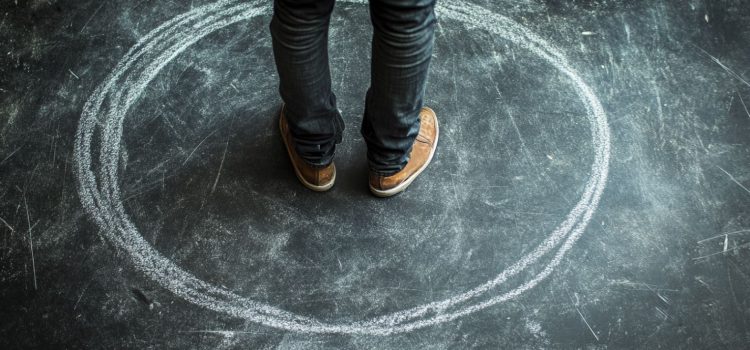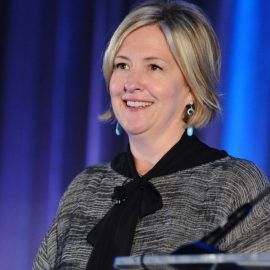
Are you stuck in a creative comfort zone? How can you expand your creativity?
It’s natural to feel some anxiety when leaving your creative comfort zone. However, it’s difficult to progress if you get stuck using the same creative methods over and over again.
Here’s Questlove’s recommendations for expanding your creativity.
Expand Your Creative Comfort Zone
One method Questlove recommends to expand your creativity is to try new things. He argues that creative people can get stuck doing what they know best—using the same techniques, working with familiar materials, or creating in predictable styles. When you push yourself beyond your comfort zone, you can discover ideas you might otherwise never try.
(Shortform note: Why is it so hard to leave our comfort zone? According to research, our brains are wired to avoid stress and stay in safe, familiar territory. When you push yourself into new situations, you naturally experience anxiety and uncertainty—it’s your brain’s way of trying to protect you. However, a moderate amount of stress improves your performance and helps you grow. By stepping outside your comfort zone strategically, you can develop resilience, boost your self-confidence, and expand your understanding of what’s possible. The key is to push yourself gradually rather than diving into overwhelming situations.)
For example, in 1991, MTV’s show Unplugged invited hip-hop artists to perform their songs without electronic equipment. Questlove writes that when LL Cool J performed his songs like “Mama Said Knock You Out” with a live band instead of pre-recorded samples and electronic beats, he created entirely new versions that sounded more like folk music. By stripping away typical hip-hop elements, artists gave their songs new life and energy.
(Shortform note: Just like MTV’s Unplugged series, NPR’s Tiny Desk concerts have become a modern testing ground for artists to show their authenticity. The intimate office performances force musicians to strip away their usual production and perform with minimal, often acoustic arrangements. Major pop artists like Post Malone and Usher have used Tiny Desk to demonstrate they can deliver performances without autotune or elaborate stage shows. However, not all artists benefit from this bare-bones approach—sometimes removing the production elements can expose weaknesses rather than allow the artists’ talents to shine.)
Questlove suggests several ways to challenge yourself similarly:
1. Spend time with different types of creators. When you see how creators in other fields create their work, you can learn new ways to approach yours. For example, if you’re a painter, you could spend time watching animators work. By observing their workflow, you might discover new ideas about color, rhythm, or composition.
(Shortform note: These types of creators might fall outside your usual social circle. For this reason, Meg Jay recommends you reach out to weak ties—people you know less well. In The Defining Decade, Jay acknowledges that while you may feel uncomfortable reaching out to people you don’t know very well, they’re invaluable contacts. Your closest friends and collaborators (strong ties) often think too similarly to you to spark fresh creative insights. Weak ties are more likely to work in different fields, use different techniques, and draw from different creative wells than your inner circle. When you interact with them, you’re forced to explain your work more clearly and professionally, which helps you see it through fresh eyes.)
2. Experience art that challenges or confuses you. When art feels strange or hard to understand, your brain works harder to make sense of it. This mental stretch can help you think in new ways. For example, if you usually listen to rock music, try listening to classical music.
(Shortform note: Why does experiencing art that challenges you improve your creativity? In The Rise of Superman, performance expert Steven Kotler says you have to experience challenge and frustration to enter a flow state—a state of deep, sustained focus in which you’re fully immersed in an activity. He writes that in a flow state, you perform at your best because your intuition takes over, and your brain releases performance-enhancing chemicals. However, your brain won’t release flow-inducing signals without a high degree of mental exertion. So, by looking at challenging art, you can set yourself up for flow.)
3. Learn a new skill. Questlove suggests you spend a small part of your creative time learning something different from your usual work. For example, a dancer who takes up creative writing might discover new ways to think about rhythm and storytelling that enhance their choreography. You don’t need to become an expert at the new skill—just learn enough to gain new perspectives you can bring back to your main creative work.(Shortform note: Learning a new skill doesn’t have to take a lot of time. In The First 20 Hours, Josh Kaufman explains how to learn the basics of any new skill with only 20 hours of practice. He recommends breaking down the skill into smaller subskills, gathering necessary resources and tools, and then practicing in short chunks throughout the day. Kaufman’s approach to quick skill acquisition can help you expand your creative horizons without having to sink a lot of time and energy into it.)






